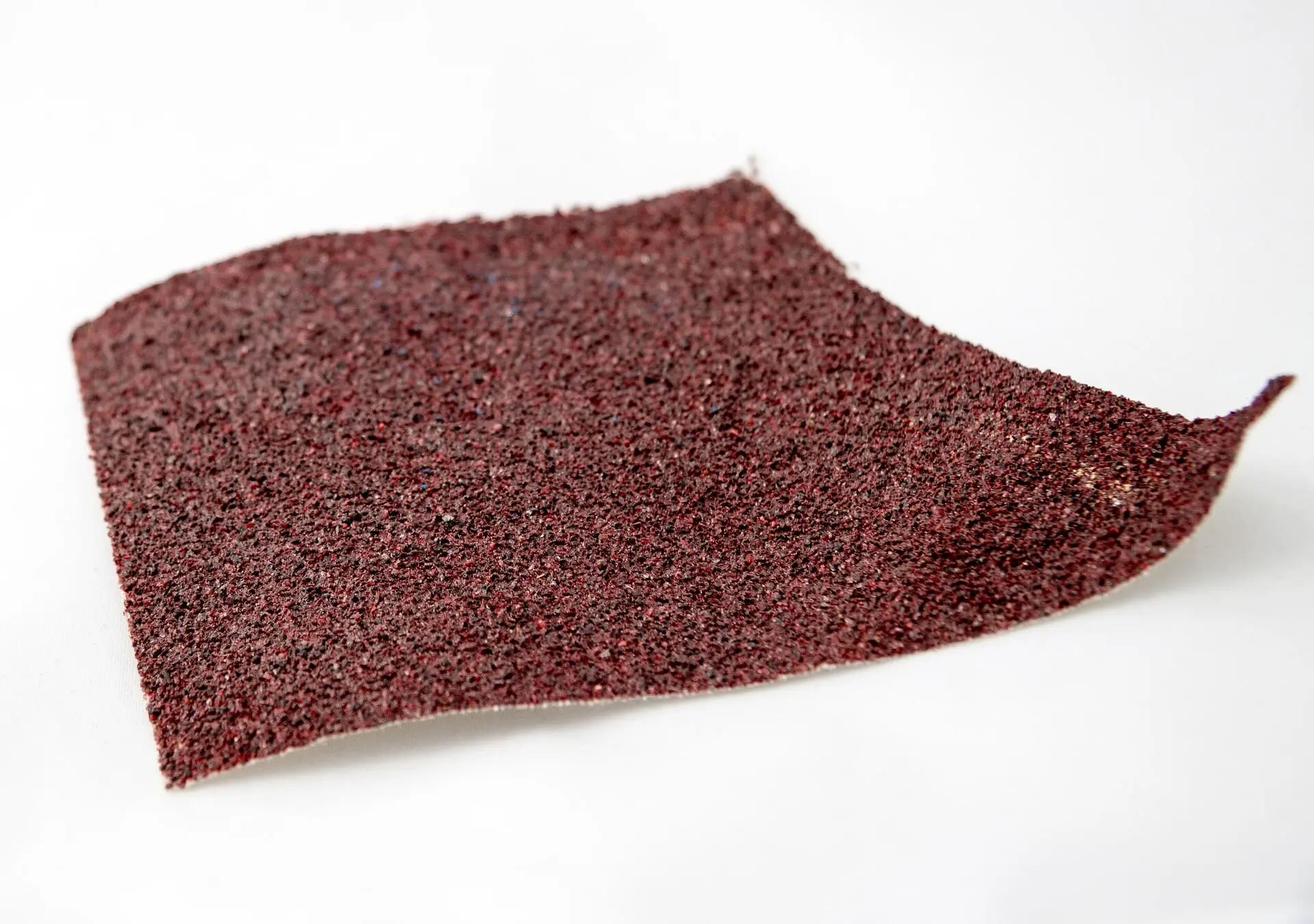Home>Renovation & DIY>Tools & Equipment>When Was Sandpaper Invented


Tools & Equipment
When Was Sandpaper Invented
Published: December 20, 2023
Discover the history of sandpaper, its invention, and how it revolutionized the tools and equipment industry. Learn about the impact of sandpaper on woodworking and metalworking.
(Many of the links in this article redirect to a specific reviewed product. Your purchase of these products through affiliate links helps to generate commission for Storables.com, at no extra cost. Learn more)
Introduction
Welcome to the fascinating world of sandpaper and sanding tools! Whether you’re a DIY enthusiast, a woodworking aficionado, or a professional tradesperson, understanding the history and evolution of sandpaper is crucial for appreciating the significance of this essential tool. From its humble beginnings to its modern-day applications, sandpaper has played a pivotal role in shaping various industries and crafts.
In this article, we’ll embark on a journey through time, exploring the origins of sanding tools, the invention of sandpaper, and the remarkable evolution of this indispensable abrasive material. We’ll also delve into modern sanding techniques, shedding light on the innovative methods that have revolutionized the art of smoothing and shaping surfaces.
So, fasten your seatbelt and get ready to uncover the captivating story of sandpaper – a tale woven with ingenuity, craftsmanship, and the relentless pursuit of perfection.
Key Takeaways:
- Sandpaper, invented in ancient China and refined in the Middle East, revolutionized surface refinement, empowering craftsmen with a versatile and efficient tool for achieving unprecedented levels of precision and finesse.
- The evolution of sandpaper from natural to synthetic abrasives, coupled with advancements in bonding agents and backing materials, has reshaped modern sanding techniques, offering a diverse array of tools tailored to specific applications and environmental consciousness.
Read more: When Was The Bathtub Invented
Early Sanding Tools
Long before the invention of sandpaper, ancient civilizations utilized various rudimentary tools to smooth and refine surfaces. One of the earliest methods involved the use of rough-textured materials such as animal hides, shells, and natural abrasives like pumice and sandstone. These materials were rubbed against wood, stone, or metal to achieve a smoother finish, laying the foundation for the concept of abrasive surface refinement.
As civilizations advanced, so did the techniques for sanding and smoothing surfaces. In ancient Egypt, craftsmen employed sandstone blocks to grind and polish intricate carvings and sculptures, showcasing the early application of abrasive materials in artisanal work. Similarly, in ancient China, artisans utilized fragments of pottery and natural abrasives to refine wooden surfaces, marking another significant milestone in the history of sanding tools.
During the Middle Ages, craftsmen employed hand-held tools such as rasps, files, and scrapers to shape and smooth wood, metal, and other materials. These tools, often crafted from hardened steel, allowed artisans to meticulously refine surfaces, albeit with labor-intensive and time-consuming methods.
Notably, the advent of water-powered mills in medieval Europe introduced more efficient grinding and polishing techniques. These mills utilized abrasive materials such as emery, corundum, and even glass to refine various materials, laying the groundwork for the mechanized sanding processes that would emerge in the centuries to come.
The Invention of Sandpaper
The pivotal moment in the history of sanding tools arrived with the invention of sandpaper, a revolutionary abrasive material that transformed the art of surface refinement. The precise origins of sandpaper are shrouded in the mists of time, with early iterations believed to have emerged in ancient China, where crushed shells and sand were bonded to parchment using natural gums to create a rudimentary abrasive surface.
However, it was during the 13th century in the Middle East that the concept of coated abrasives, a defining characteristic of modern sandpaper, began to take shape. Skilled artisans in the Middle East devised a technique to glue crushed glass to paper using natural adhesives, resulting in a rudimentary form of sandpaper. This innovative approach marked a significant leap forward in the evolution of sanding tools, offering craftsmen a more efficient and versatile method for smoothing and refining surfaces.
As trade routes expanded and knowledge spread, the use of coated abrasives gained traction across Europe, where craftsmen and artisans embraced this newfound tool for a wide array of applications. The Industrial Revolution further propelled the popularity of sandpaper, as advancements in manufacturing and adhesive technology led to the mass production of this indispensable abrasive material.
By the 19th century, sandpaper had become a ubiquitous tool in workshops and factories, empowering craftsmen and industrial workers to achieve unprecedented levels of precision and finesse in their craft. The invention of sandpaper not only revolutionized traditional trades such as woodworking, metalworking, and masonry but also paved the way for new forms of artistic expression and industrial innovation.
The first recorded use of sandpaper was in the 13th century in China. It was made by gluing crushed shells, seeds, and sand to parchment.
Evolution of Sandpaper
Over the centuries, the evolution of sandpaper has been marked by remarkable advancements in materials, manufacturing techniques, and applications. From its humble beginnings as a simple amalgamation of abrasive particles and bonding agents, sandpaper has undergone a series of transformative developments that have elevated its effectiveness and versatility.
One of the most significant milestones in the evolution of sandpaper was the transition from natural abrasives to synthetic materials. While early sandpapers utilized natural substances such as sand, glass, and garnet, the 20th century witnessed the introduction of synthetic abrasives such as aluminum oxide, silicon carbide, and ceramic grits. These synthetic materials offered superior hardness, durability, and consistency, enabling sandpaper to tackle a broader range of materials and surface types with enhanced efficiency.
Furthermore, advancements in bonding agents and backing materials have played a crucial role in enhancing the performance and longevity of sandpaper. Traditional adhesives like animal glues have given way to modern resin-based bonding systems, providing superior adhesion and resistance to heat and moisture. Similarly, the evolution of backing materials, including paper, cloth, and polyester, has contributed to the durability and flexibility of sandpaper, allowing it to conform to various contours and withstand rigorous usage.
Another notable development in the evolution of sandpaper is the diversification of grit sizes and configurations. Manufacturers now produce sandpaper in a wide spectrum of grits, ranging from coarse to ultra-fine, catering to specific applications that demand varying levels of abrasion. Additionally, the introduction of specialized sanding accessories, such as sanding sponges and abrasive pads, has expanded the versatility of sandpaper, enabling precision sanding in intricate spaces and curved surfaces.
Moreover, the advent of innovative sanding technologies, including random orbital sanders, belt sanders, and oscillating multi-tools, has redefined the landscape of surface preparation and finishing. These power tools, coupled with advanced dust extraction systems, have elevated the efficiency and ergonomics of sanding processes, empowering craftsmen and tradespeople to achieve impeccable results with unprecedented speed and control.
As we venture into the 21st century, the evolution of sandpaper continues unabated, driven by ongoing research in materials science, engineering, and ergonomics. With a focus on sustainability and performance, modern sandpaper embodies a harmonious fusion of tradition and innovation, serving as an indispensable ally in the pursuit of craftsmanship and precision.
Modern Sanding Techniques
In the contemporary era, sanding techniques have undergone a paradigm shift, propelled by technological advancements, ergonomic considerations, and environmental consciousness. From traditional hand sanding to sophisticated power sanding methods, modern craftsmen and industrial professionals have a diverse array of techniques at their disposal, each tailored to specific applications and desired outcomes.
Power sanding tools have revolutionized the landscape of surface preparation and finishing, offering unparalleled efficiency and precision. Random orbital sanders, equipped with oscillating and rotating discs, provide a swirl-free finish while minimizing the risk of sanding marks. These versatile tools are adept at smoothing wood, metal, and composite materials, making them indispensable in woodworking, automotive refinishing, and construction applications.
Belt sanders, characterized by their robust sanding belts and aggressive material removal capabilities, excel in leveling and shaping large surfaces. Whether it’s refining tabletops, doors, or floors, belt sanders are prized for their rapid stock removal and uniform surface blending. Additionally, oscillating multi-tools equipped with sanding attachments have emerged as go-to solutions for precision sanding in tight corners, contours, and detailed workpieces.
Furthermore, the advent of advanced dust extraction systems has redefined the occupational health and safety standards associated with sanding processes. Equipped with HEPA filters and efficient suction mechanisms, modern sanding equipment minimizes airborne dust particles, safeguarding the respiratory well-being of operators and maintaining a clean working environment.
Hand sanding, though rooted in tradition, remains an indispensable technique in modern craftsmanship. The tactile finesse and control offered by hand sanding are irreplaceable, especially in delicate finishing applications where meticulous attention to detail is paramount. Sanding blocks, sanding sponges, and flexible abrasive pads have augmented the efficacy of hand sanding, allowing craftsmen to achieve flawless results in intricate profiles and curved surfaces.
Moreover, the integration of abrasive technology with digital precision has given rise to computerized sanding systems that automate the sanding process with unprecedented accuracy. These systems, often employed in industrial settings, utilize robotic arms and advanced software to execute complex sanding tasks with minimal human intervention, ensuring consistent quality and efficiency in mass production environments.
As sustainability and environmental stewardship take center stage, the development of eco-friendly abrasives and biodegradable backing materials has reshaped the landscape of modern sanding techniques. Manufacturers are increasingly prioritizing the use of renewable resources and recyclable components, aligning sanding practices with eco-conscious principles without compromising performance or durability.
In essence, modern sanding techniques epitomize a harmonious convergence of tradition and innovation, where time-honored craftsmanship is augmented by cutting-edge technologies and sustainable practices. Whether it’s the artistry of hand sanding or the precision of automated systems, the evolution of sanding techniques continues to elevate the standards of surface refinement and finishing across diverse industries and creative pursuits.
Read more: When Was HVAC Invented
Conclusion
The journey through the history, evolution, and modern applications of sandpaper and sanding techniques unveils a narrative of ingenuity, perseverance, and relentless pursuit of excellence. From the rudimentary sanding tools of antiquity to the advanced sanding technologies of today, the art of surface refinement has transcended epochs, leaving an indelible mark on craftsmanship, industry, and artistic expression.
Early sanding tools, borne of necessity and craftsmanship, laid the groundwork for the development of abrasive materials and techniques. The invention of sandpaper, a pivotal moment in the annals of craftsmanship, heralded a new era of precision and efficiency, empowering artisans and tradespeople to elevate their work to unprecedented levels of refinement.
The evolution of sandpaper, characterized by advancements in materials, manufacturing processes, and applications, has reshaped the landscape of surface preparation and finishing. The transition from natural to synthetic abrasives, coupled with innovations in bonding agents and backing materials, has endowed sandpaper with unparalleled durability, versatility, and performance.
Modern sanding techniques, propelled by technological innovation and environmental consciousness, offer a diverse arsenal of tools and methods tailored to the specific needs of craftsmen, artisans, and industrial professionals. From power sanding tools that deliver precision and efficiency to the enduring artistry of hand sanding, the contemporary sanding repertoire embodies a harmonious blend of tradition and innovation.
As we stand on the threshold of a new era, the legacy of sandpaper and sanding techniques continues to inspire creativity, precision, and sustainability. The seamless fusion of time-honored craftsmanship with cutting-edge technologies underscores the enduring relevance of sanding tools in shaping the future of craftsmanship and industrial innovation.
So, whether you’re a woodworking enthusiast, a metal fabricator, or an artisan striving for perfection, the story of sandpaper serves as a testament to the enduring pursuit of excellence – a tale woven with grit, resilience, and the unwavering commitment to refine the world, one stroke at a time.
Frequently Asked Questions about When Was Sandpaper Invented
Was this page helpful?
At Storables.com, we guarantee accurate and reliable information. Our content, validated by Expert Board Contributors, is crafted following stringent Editorial Policies. We're committed to providing you with well-researched, expert-backed insights for all your informational needs.















0 thoughts on “When Was Sandpaper Invented”